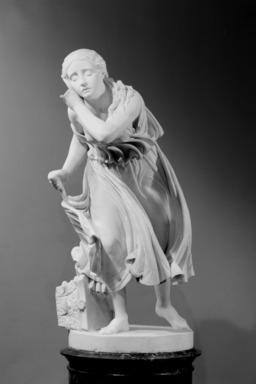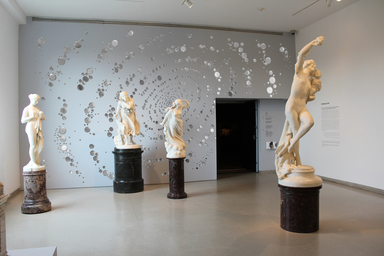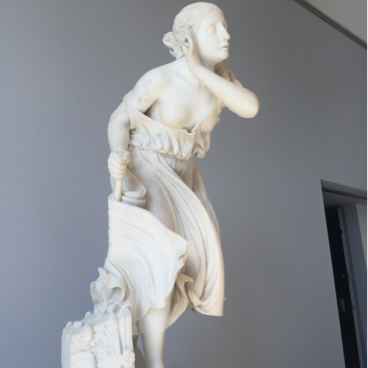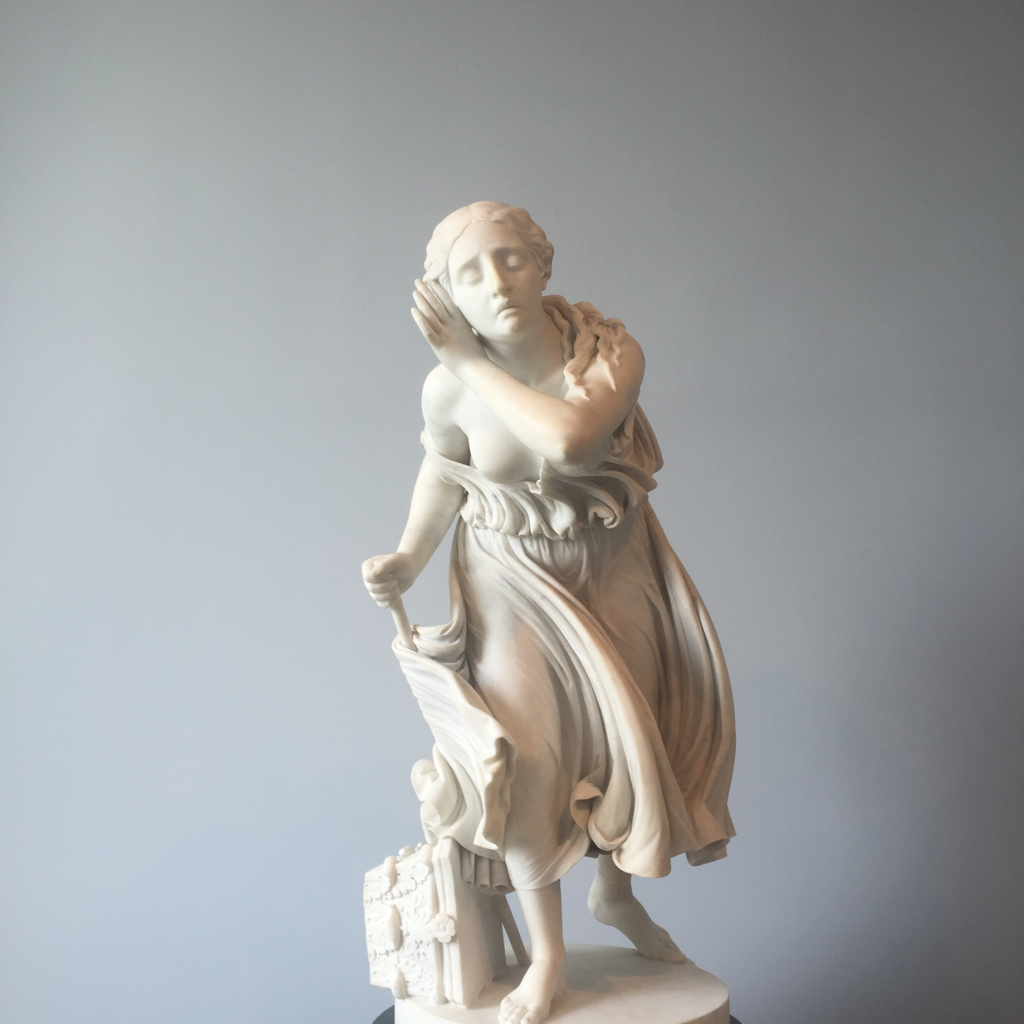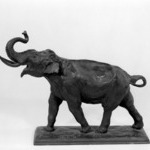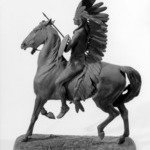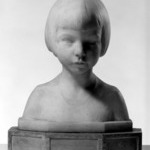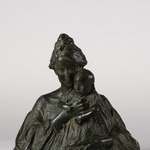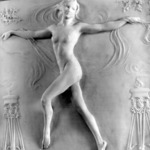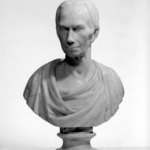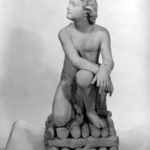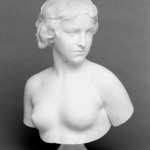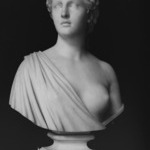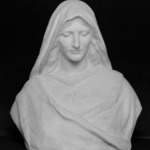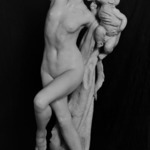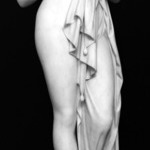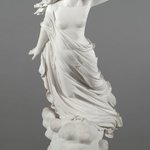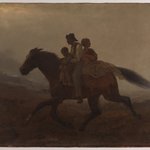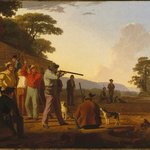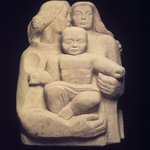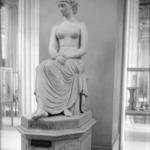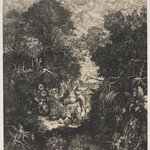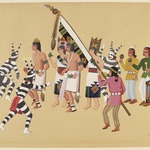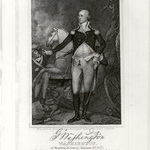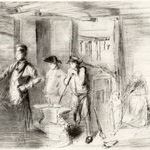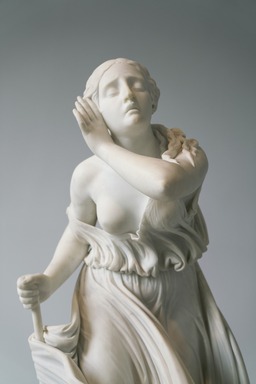

Randolph Rogers (American, 1825–1892). Nydia, 1861. Marble, 53 1/2 x 24 7/8 x 39 3/8 in. (135.9 x 63.2 x 100 cm). Brooklyn Museum, Gift of Frederic B. Pratt, 16.507. Creative Commons-BY (Photo: Brooklyn Museum, 16.507_detail_in_situ.jpg)

Randolph Rogers (American, 1825–1892). Nydia, 1861. Marble, 53 1/2 x 24 7/8 x 39 3/8 in. (135.9 x 63.2 x 100 cm). Brooklyn Museum, Gift of Frederic B. Pratt, 16.507. Creative Commons-BY (Photo: Brooklyn Museum, 16.507_09.770_detail_in_situ.jpg)
Nydia
Randolph Rogers
American Art
One of the most popular sculptures of the nineteenth century, Nydia was inspired by Lord Edward Bulwer-Lytton’s novel The Last Days of Pompeii (1834). Here, aided only by a walking stick and her exceptional hearing, the blind Nydia attempts to leave Pompeii before it is buried by a volcano. A broken Corinthian column by her right foot alludes to the city’s impending doom. The subject of Pompeii’s destruction in 79 c.e. was popular in this period and referenced the ancient origins of the Neoclassical style.
MEDIUM
Marble
DATES
1861
DIMENSIONS
53 1/2 x 24 7/8 x 39 3/8 in. (135.9 x 63.2 x 100 cm)
estimated combined weight. Base 1200. Sculpture 600: 1800 lb. (816.47kg) (show scale)



INSCRIPTIONS
Inscribed on bottom of capital: "Randolph Rogers, / Rome."
COLLECTIONS
American Art
ACCESSION NUMBER
16.507
CREDIT LINE
Gift of Frederic B. Pratt
CATALOGUE DESCRIPTION
Statue of young woman striding forward with closed eyes and hunched back, proper left hand cupped to right ear, and proper right hand holding walking stick. Figure wears chiton with right shoulder strapped slipped down revealing breast, deeply carved fluttering drapery folds in skirt. Stands on round base with Ionic capital on its side at her feet.
Condition: Good; top of walking stick broken off.
EXHIBITIONS
MUSEUM LOCATION
This item is not on view
CAPTION
Randolph Rogers (American, 1825–1892). Nydia, 1861. Marble, 53 1/2 x 24 7/8 x 39 3/8 in. (135.9 x 63.2 x 100 cm). Brooklyn Museum, Gift of Frederic B. Pratt, 16.507. Creative Commons-BY (Photo: Brooklyn Museum, 16.507_detail_in_situ.jpg)
IMAGE
detail, 16.507_detail_in_situ.jpg. Brooklyn Museum photograph, 2018
"CUR" at the beginning of an image file name means that the image was created by a curatorial staff member. These study images may be digital point-and-shoot photographs, when we don\'t yet have high-quality studio photography, or they may be scans of older negatives, slides, or photographic prints, providing historical documentation of the object.
RIGHTS STATEMENT
Creative Commons-BY
You may download and use Brooklyn Museum images of this three-dimensional work in accordance with a Creative Commons license. Fair use, as understood under the United States Copyright Act, may also apply.
Please include caption information from this page and credit the Brooklyn Museum. If you need a high resolution file, please fill out our online application form (charges apply).
For further information about copyright, we recommend resources at the United States Library of Congress, Cornell University, Copyright and Cultural Institutions: Guidelines for U.S. Libraries, Archives, and Museums, and Copyright Watch.
For more information about the Museum's rights project, including how rights types are assigned, please see our blog posts on copyright.
If you have any information regarding this work and rights to it, please contact copyright@brooklynmuseum.org.
RECORD COMPLETENESS
Not every record you will find here is complete. More information is available for some works than for others, and some entries have been updated more recently. Records are frequently reviewed and revised, and we welcome any additional information you might have.
